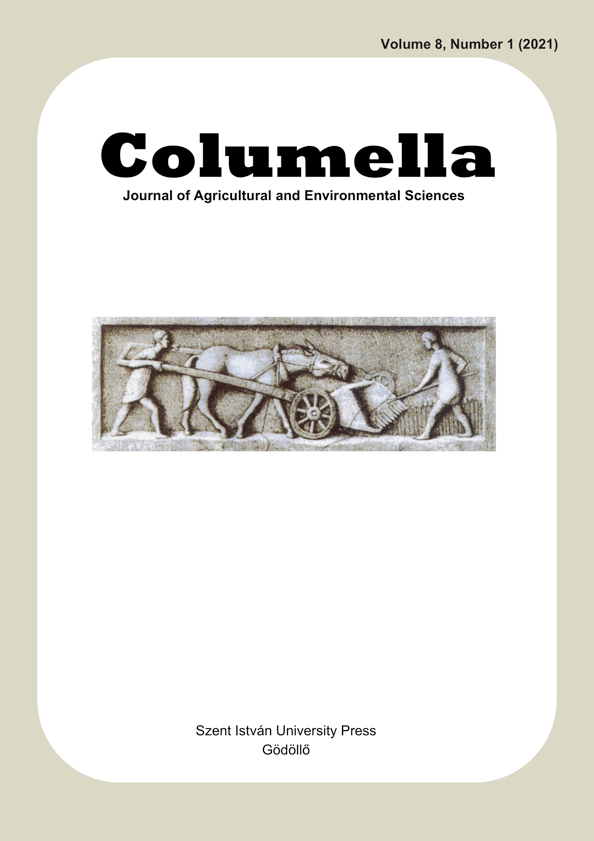Different organic mulch materials affect the abundance of enchytraeids in an open-field experiment
DOI:
https://doi.org/10.18380/SZIE.COLUM.2021.8.1.13Keywords:
Annelids, compost, leaf litter, potworm, strawAbstract
Organic mulch may provide favourable soil conditions e.g. soil moisture or organic matter content, which may enhance the number of enchytraeids. However, there is no sufficient information about the relationship between plant-based mulch and this beneficial soil animal group. Therefore, an open-field experiment was conducted with tomato as a test plant to examine the effect of different types of organic mulch materials on the natural occurence of enchytraeids. Our study microplots received the following treatments: 1) yard-waste compost, 2) walnut leaf litter, 3) mixed leaf litter without walnut and 4) wheat straw. Control microplots were left unmulched. Randomized block design was used with eight replications to the treatments and four to the control. At the end of the growing season, three soil samples were taken from the root zone of each plant with a split soil corer, and enchytraeids were extracted by the wet funnel method. Living enchytraeids were counted under a dissecting microscope, and their density values were estimated. Worms were identified in five randomly selected samples of each treatment. In addition, soil moisture was determined by oven-drying as well. Mulch material types had significantly different effects on both Enchytraeid density and soil moisture. Under walnut leaf litter, mixed leaf litter and straw cover, higher numbers of individuals were found. In the case of soil moisture content, straw mulching had the highest value, while compost and uncovered surfaces the lowest. It appears that mulch materials serve as food source and provide favourable conditions for enchytraeid communities as well.
Downloads
Published
Issue
Section
License
Copyright (c) 2021 Renáta Petrikovszki, Fanni Bárányos, Amelita Gerda Molnár, Ferenc Tóth, Gergely Boros

This work is licensed under a Creative Commons Attribution-NonCommercial-NoDerivatives 4.0 International License.










